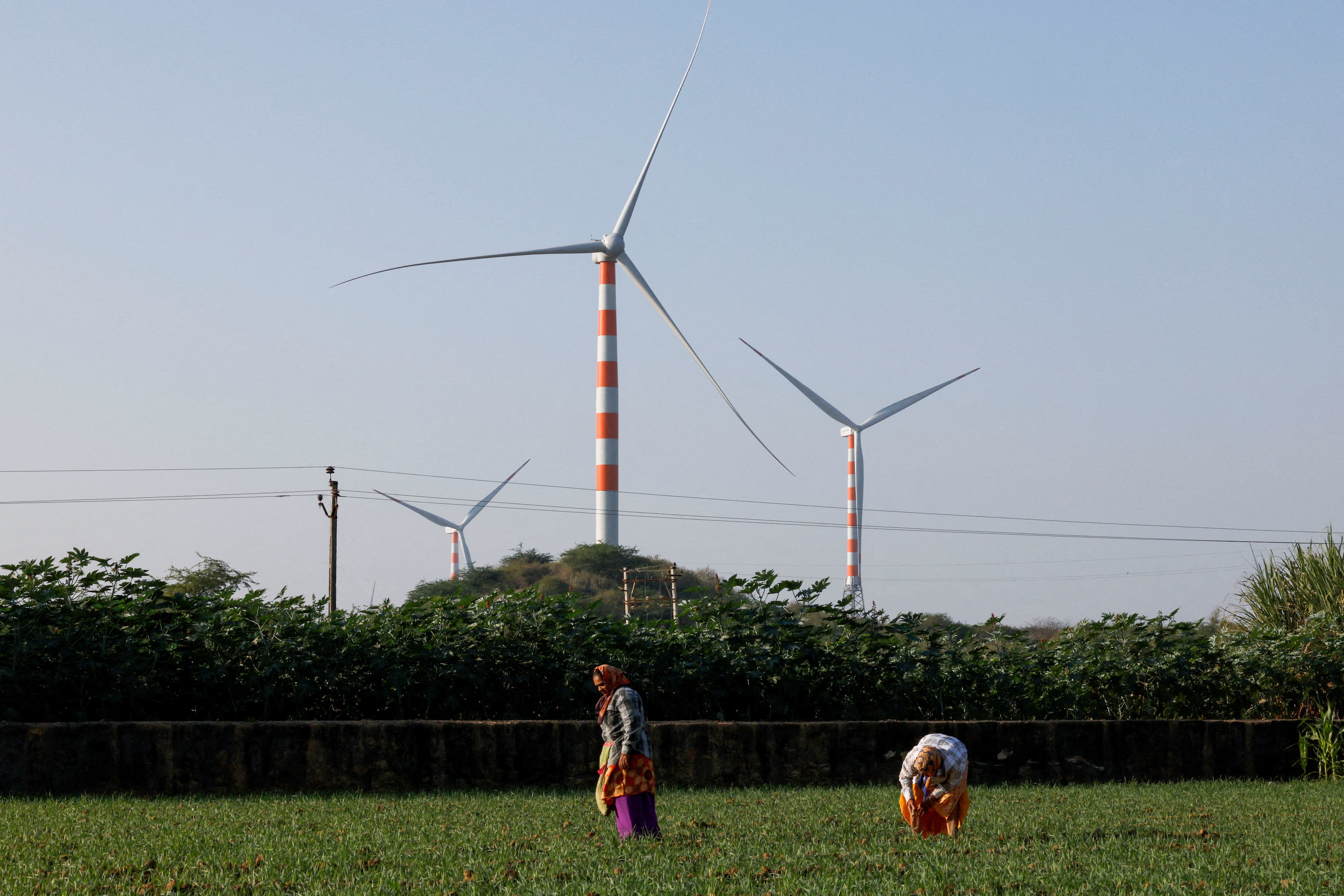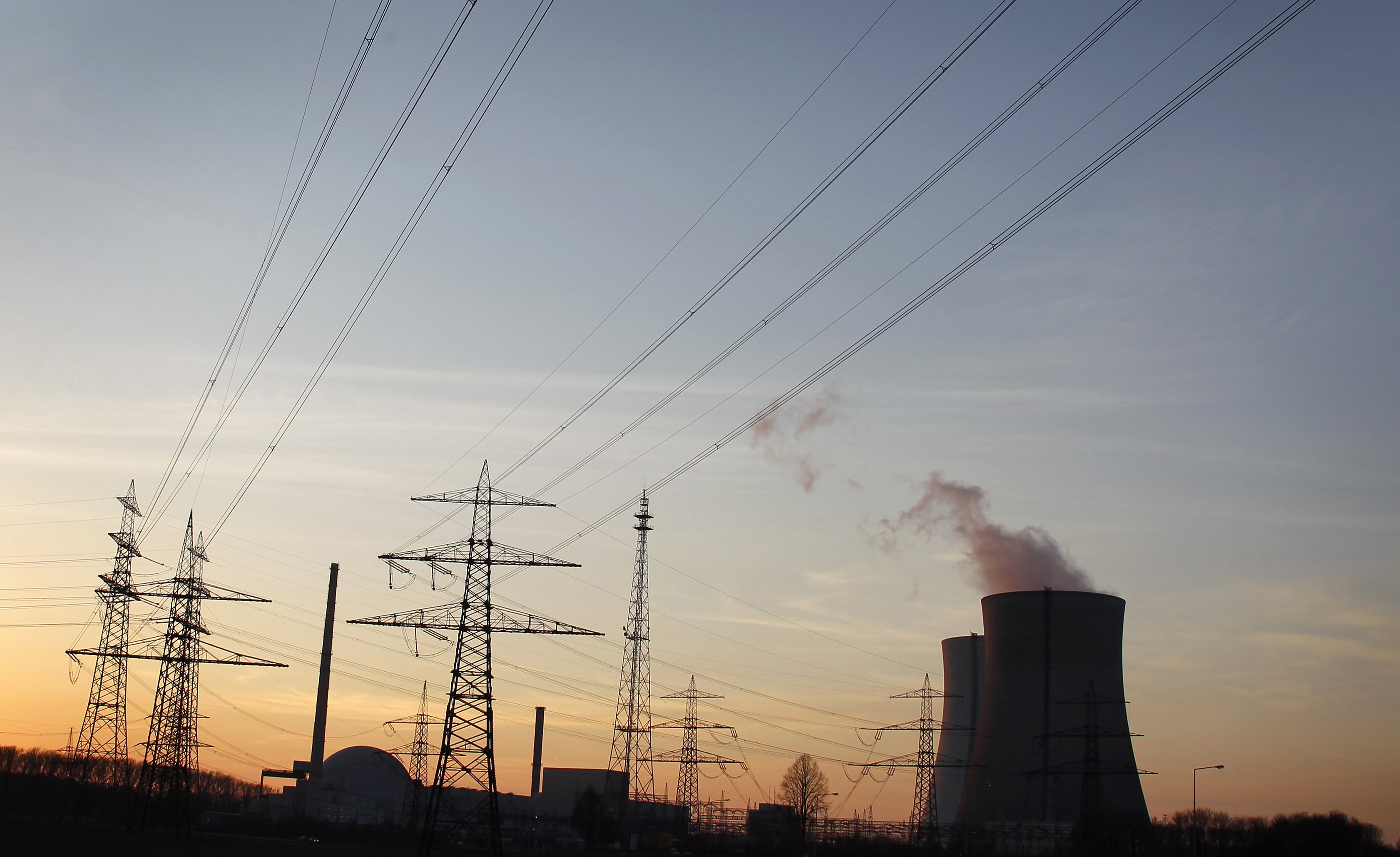Nuclear fusion news: The science behind the energy technology, explained

Nuclear fusion, the process that powers the Sun and stars, merges two atomic nuclei into a larger one, releasing energy.
Image: Reuters
Stay up to date:
Nuclear Security
This article was most recently updated in September 2024.
- Nuclear fusion, the process that powers the Sun and stars, merges two atomic nuclei into a larger one.
- Globally, government labs and companies are racing to generate power from fusion.
- Now China has joined the nuclear fusion race, with an estimated $1.5 billion budget, according to reports.
The buzz around fusion energy as a way to reduce emissions keeps building. Emissions-free nuclear fusion technology could be a game-changer in the fight against climate change, if it can be scaled up.
And the headlines keep coming.
China has entered the nuclear fusion race, according to reports in Nature and the Financial Times in August and September 2024. Estimates put the country's fusion budget at around $1.5 billion a year – almost double that allocated by the US government to research in 2024.
Shanghai start-up Energy Singularity is seeking $500 million to develop clean energy, one of 45 companies in around 13 countries working to commercialize nuclear fusion.
Meanwhile, work is underway on "the UK's NASA moment" – a nuclear fusion energy plant in the north of England. The Spherical Tokamak for Energy Production (STEP) project was launched in July and it's thought construction will be completed by 2040.
'Industries in the Intelligent Age' at Davos 2025
What is nuclear fusion exactly?
Our current nuclear power stations use nuclear fission – essentially splitting an atom’s nucleus. Nuclear fusion, the process that powers the Sun and stars, merges two atomic nuclei into a larger one. Both reactions release large amounts of energy, but with nuclear fusion, there is a high energy yield and low nuclear waste production.
Fusion occurs when two light atoms bond together, or fuse, to make a heavier one. The total mass of the new atom is less than that of the two that formed it; the "missing" mass is given off as energy, as described by Albert Einstein's famous E=mc2 equation.
There are several "recipes" for cooking up nuclear fusion, which rely on different atomic combinations.
The most promising combination for power on Earth today is the fusion of a deuterium atom with a tritium one. The process, which requires temperatures of approximately 72 million degrees Fahrenheit (39 million degrees Celsius), produces 17.6 million electron volts of energy.
Deuterium is a promising ingredient because it is an isotope of hydrogen. In turn, hydrogen is a key part of water. A gallon of seawater (3.8 litres) could produce as much energy as 300 gallons (1,136 litres) of petrol.
AI and nuclear fusion
Artificial intelligence could help solve a problem faced by the biggest magnetic fusion facility in the US, according to research published in February 2024 in the journal Nature.
By using reinforcement learning, scientists were able to predict plasma tearing in the tokamak reactor DIII-D at the National Fusion Facility in San Diego, which would disrupt the reaction.
"Developing solutions like this increase [the] confidence that we can run these machines without any issues,” study author Princeton University's Professor Egemen Kolemen told CNN.
The breakthrough came after the final experiment at the UK's JET fusion laboratory in Oxford produced a new world record for fusion power generation.
It produced 69 megajoules of energy over five seconds – or enough energy to heat up to five hot baths, according to the BBC, triple what it generated back in 1997.
The UK's Minister for Nuclear and Networks, Andrew Bowie, said: "JET's final fusion experiment is a fitting swansong after all the ground-breaking work that has gone into the project since 1983. We are closer to fusion energy than ever before thanks to the international team of scientists and engineers in Oxfordshire."
At the UN climate conference, COP28, in Dubai in December 2023, US special climate envoy John Kerry said: "There is potential in fusion to revolutionize our world."
He was launching an international engagement plan – involving 35 countries – to boost nuclear fusion through research and development. The initiative will also focus on regulation and safety, and look to reduce supply chain issues.
Kerry's announcement followed the news of Britain and the US signing a cooperation agreement on fusion in November 2023. Australia, Germany and Japan are also pursuing fusion, according to Reuters.
Nuclear fusion breakthroughs
In August 2023, scientists at the US Lawrence Livermore National Laboratory in California repeated a breakthrough they first made in December 2022, achieving a "net energy gain" in fusion ignition.
Using laser beams, the amount of energy from the fusion reaction surpassed that concentrated on the target for an instant.
Back in January 2023 at the World Economic Forum's Annual Meeting in Davos, nuclear scientist and Director of the lab, Kim Budil, spoke on a panel, a month after her team made the original breakthrough.
"If we want to take this forward, public-private partnerships are going to be essential," she said.
Private-sector investment in the nascent technology has surged in the past 20 years, according to McKinsey.
In May 2023, Microsoft announced a deal with private US nuclear fusion company Helion to buy electricity made using fusion technology in 2028.
Microsoft President Brad Smith said Helion's work "supports our own long-term clean energy goals and will advance the market to establish a new, efficient method for bringing more clean energy to the grid, faster".
Companies have raised around $5 billion in private funding for nuclear fusion, in a quest to replicate the power source that fuels the sun, Reuters says.
Pioneering nuclear fusion
These companies are building on the earlier work of pioneering researchers, including those at the JET fusion lab. The Joint European Torus site, to give it its full name, was a collaboration of European nuclear scientists.
The JET lab, once the world’s largest and most advanced fusion reactor, began its pioneering experiments in 1983. Thanks to its success in advancing fusion technology, it operated for 40 years before entering decommissioning in October 2023. Its final experiment, conducted in December, marked a significant milestone in fusion research.

Its successor is a facility called ITER, based in France and due to start operating in 2025, according to the BBC, but without the UK's involvement.
Instead, the UK government has committed £650 million to national research programmes, including STEP, the world's first fusion power plant in Nottinghamshire.
The nuclear fusion race
Globally, government labs and companies are racing to generate power from fusion – including at the US Lawrence Livermore National Laboratory in California. In December 2022, scientists at the lab managed to produce more energy from the reaction than it consumed – a net gain of 1.5 megajoules in less time than it takes light to travel one inch.
At Davos in 2023, Kim Budil, the lab's director, explained the experiment involved beaming 192 lasers on a tiny target and heating it to create a self-sustaining reaction.
But she said the timescale to generating power could be "two or three decades away" and urged great collaboration to build a fusion "ecosystem".
"If I look at the private-sector fusion companies that have already been spun out, they have needs for expertise and certain specific skills that it would be cost prohibitive to develop within a start-up framework. So they can partner with the laboratories to get access to that capability and expertise.
"To advance the cause of fusion, we have to create an ecosystem where any private sector players in this area who want to commercialize the technology can work with us to help advance the target designs – think about laser architectures or other driver architectures –to benefit from our expertise and what will be required to operate a facility at this scale.
"I'm hopeful we will start seeing significant public sector investments in the energy application of this technology. We already have several companies formed around inertial confinement fusion that are starting to explore partnerships with us on how to take the technology forward.
"For the next few years, it's essential to work together."
Challenges for nuclear fusion researchers
While nuclear fusion power offers the prospect of an almost inexhaustible energy source for future generations, it has also presented many so-far-insurmountable scientific and engineering challenges.
In the Sun, massive gravitational forces create the right conditions for nuclear fusion in the star’s core, but on Earth, they are much harder to achieve.
Fusion fuel – different isotopes of hydrogen – must be heated to extreme temperatures of around 50 million degrees Celsius, kept stable under intense pressure, and dense enough and confined for long enough to allow the nuclei to fuse.
Accept our marketing cookies to access this content.
These cookies are currently disabled in your browser.
Don't miss any update on this topic
Create a free account and access your personalized content collection with our latest publications and analyses.
License and Republishing
World Economic Forum articles may be republished in accordance with the Creative Commons Attribution-NonCommercial-NoDerivatives 4.0 International Public License, and in accordance with our Terms of Use.
The views expressed in this article are those of the author alone and not the World Economic Forum.
Related topics:
Forum Stories newsletter
Bringing you weekly curated insights and analysis on the global issues that matter.
More on Energy TransitionSee all
Valentin Chomel and Jacques-Alexis Verrecchia
August 14, 2025
Gaurav Upadhyay and Labanya Prakash Jena
August 8, 2025
David Timis
August 8, 2025
Forum Stories
August 6, 2025
Marina Colombo and Lynn Kappes
August 6, 2025
Sverre Alvik
August 5, 2025








